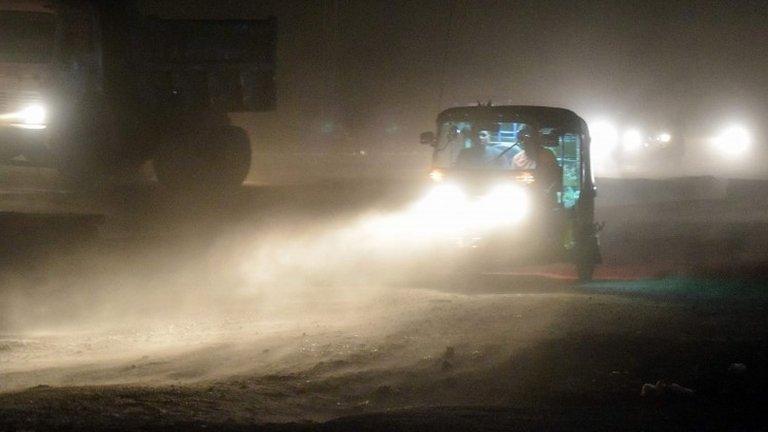India thunderstorms and lightning strikes kill 50
- Published

Lightning strikes are common in India during heavy monsoon rains
At least 50 people are reported to have died amid heavy thunder and lightning that battered parts of northern India on Tuesday, officials said.
High-speed winds and lighting strikes devastated many villages, bringing down walls and leaving dozens injured.
The eastern state of Bihar was the worst hit, with 20 confirmed deaths due to lightning.
The latest incidents come weeks after devastating dust storms killed more than 100 people across north India.
Lightning strikes are common in India during heavy monsoon rains.
Fifteen people have been killed in the northern state of Uttar Pradesh and at least 12 have died in the eastern state of Jharkhand, officials told BBC Hindi.
Three children died after a tree collapsed on them in the northern state of Uttarakhand, according to the PTI news agency.
India's Meteorological Department told the BBC that temperatures across northern India may touch up to 47C in the coming weeks, which could lead to more high-speed winds and storms in the future. They also warned that electricity could be disrupted across states due to the severe weather.
Many of the dead were sleeping indoors when their houses collapsed after being struck by lightning or gusts of wind.
India state records 36,749 lightning strikes in 13 hours
At least 2,000 people have died in lightning strikes in India every year since 2005, according to the National Crime Records Bureau.
Large parts of India have been struck by deadly storms in the past month. More than 100 people died in northern India on 4 May due to intense dust storms and heavy rains.
Authorities at the time said they were shocked by the ferocity of the storms, adding that it was one of the worst they had seen.

Safety tips when lightning strikes
Seek shelter inside a large building or a car
Get out of wide, open spaces and away from exposed hilltops
If you have nowhere to shelter, make yourself as small a target as possible by crouching down with your feet together, hands on knees and head tucked in
Do not shelter beneath tall or isolated trees
If you are on water, get to the shore and off wide, open beaches as quickly as possible
- Published26 April 2018

- Published14 May 2018

- Published4 May 2018
